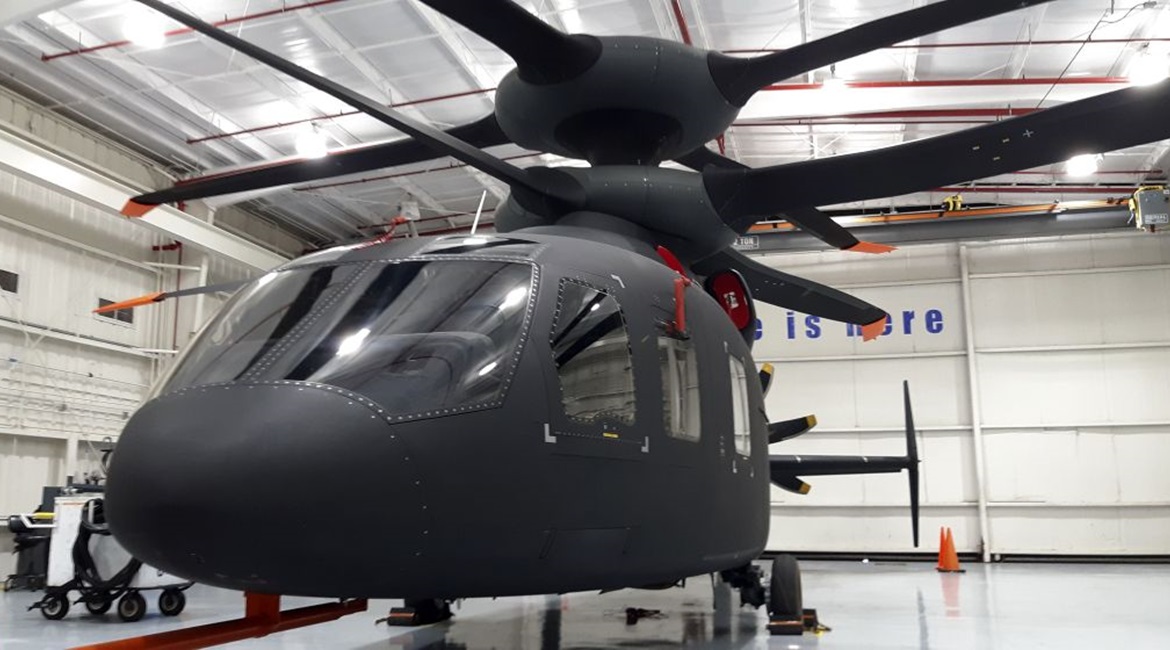
The US Army’s Future Vertical Lift (FVL) aircraft need to be below USD10,000 per flight hour and below USD60 million per airframe to be truly effective, according to an influential US senator.
“If we (spend too much money), then we cannot field the number of airframes that we need to be out there in force,” Senate Armed Services Committee (SASC) member Tammy Duckworth of Illinois, also a former US Army Sikorsky UH-60A Black Hawk helicopter pilot, said on 20 February.

The Sikorsky-Boeing SB>1 Defiant coaxial helicopter on display at Sikorsky's flight facility in West Palm Beach, Florida, on 19 February. (Janes/Pat Host)
The US Army is moving forward at pace with a pair of aircraft in FVL: Future Attack Reconnaissance Aircraft-Competitive Prototype (FARA-CP) and Future Long Range Assault Aircraft (FLRAA). A FARA-CP downselect to two competitors is expected in March while the US Army wants a FLRAA contract award selected from two finalists and programme of record in fiscal year 2022 (FY 2022). The FLRAA aircraft will be larger than the FARA-CP platforms.
Sen Duckworth is pleased that both programmes are ahead of schedule, which she called a rarity in defense procurement. The senator will ask for more money for FVL to take advantage of FARA-CP and FLRAA being further ahead than previously expected.
“I am going to make sure we do not lose that advantage through faulty (defence authorisation processes),” Sen Duckworth said at Sikorsky’s flight centre here. “We cannot be pulling back on funding for some of these programmes just at the time when we can leverage the excellent management and development.”
Looking to read the full article?
Gain unlimited access to Janes news and more...






